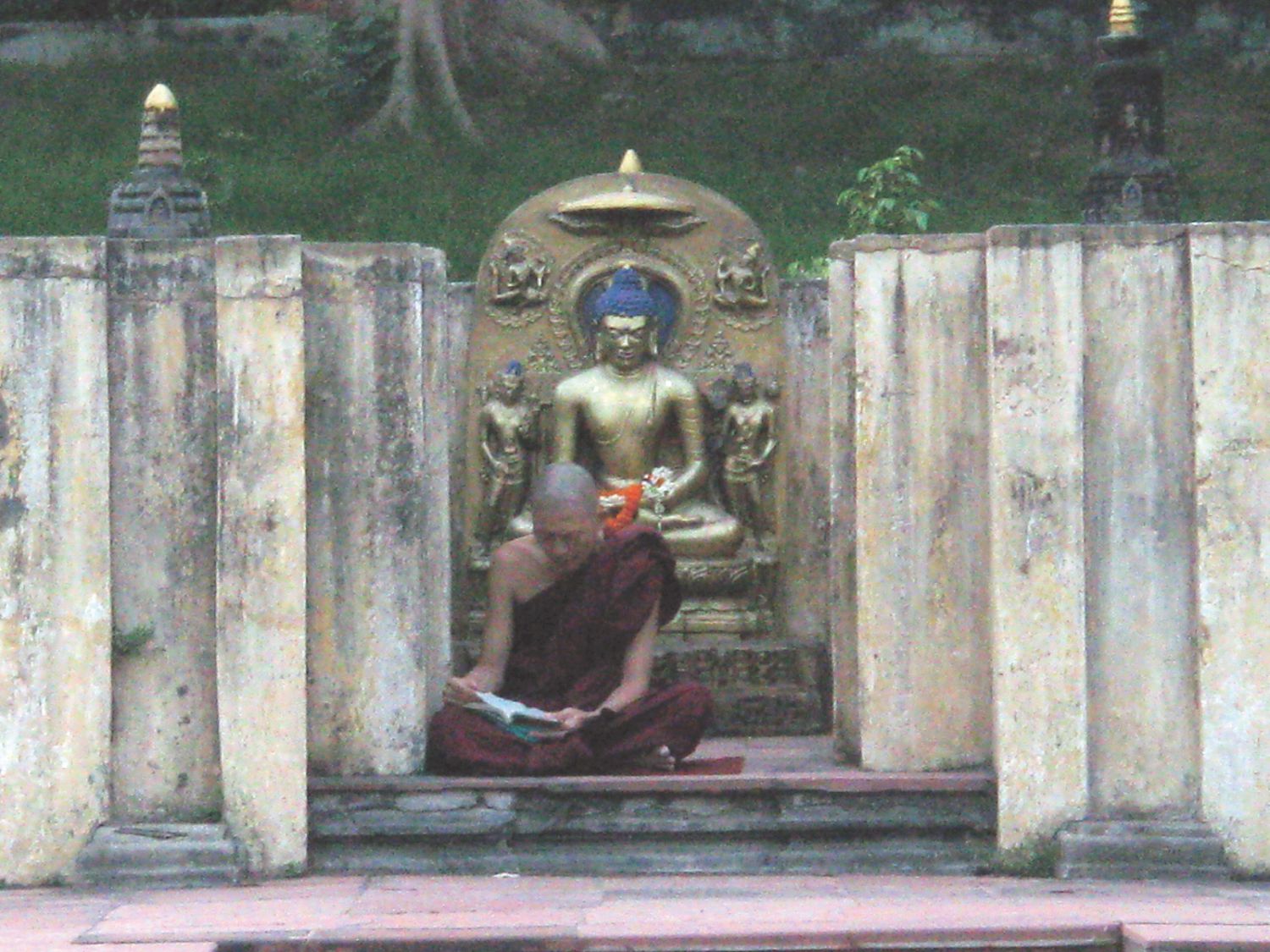Special Topics
Pilgrimage to Sacred Sites to Recollect the Saints
"Thus have I heard, at one time the Buddha dwelt at Sravasti, in the Jeta Grove..." "Thus have I heard, at one time the Buddha was at Girdhakuta Hill in Rajgir……" Many Buddhist sutras begin by indicating the locations in which the Buddha expounded the Dharma 2500 years ago, which have subsequently become destinations of pilgrimage for later generations of Buddhists. Although Buddhism no longer flourishes in India nowadays, large numbers of Buddhists from all over the world continue to make pilgrimages to the sacred sites there every year. In major sacred sites of Buddhism, one can see Dharma practitioners and pilgrims-- from Chinese, Theravada, Tibetan or other Buddhist traditions-- tracing the Buddha's footsteps. After attaining enlightenment in Bodhgaya, the Buddha set out to expound to the world the truths he had realized. As the sangha was established and the Dharma spread from India to the rest of the world, Buddhist sacred sites appeared in many countries, and unique forms of pilgrimage were developed. For example, in China, there are sacred mountains associated with the great Bodhisattvas and ancestral monasteries of major Buddhist schools or sects. Likewise, in Tibet, one finds the sacred city of Lhasa, the Potala Palace, the sacred mountain "Mount Kangrinboqe", the sacred lake "Lake Namtso", and associated pilgrimage customs to the sacred city, as well as the tradition of circumambulating the holy mountains or lakes. Japanese Buddhism has the unique Shikoku Pilgrimage* as a Buddhist way of practice. There are also many important historical sacred sites in other Buddhist countries, such as Myanmar, Thailand and Sri Lanka. As long as there is a place where Dharma is spread, holy sites will be found. The main point of taking a pilgrimage to sacred sites is to recollect compassion and wisdom of the Three Jewels, to periodically reflect on one's own ignorance, and to aspire to learn from the spirit of the ancestral generations of great practitioners and saints.
After attaining enlightenment in Bodhgaya, the Buddha set out to expound to the world the truths he had realized. As the sangha was established and the Dharma spread from India to the rest of the world, Buddhist sacred sites appeared in many countries, and unique forms of pilgrimage were developed. For example, in China, there are sacred mountains associated with the great Bodhisattvas and ancestral monasteries of major Buddhist schools or sects. Likewise, in Tibet, one finds the sacred city of Lhasa, the Potala Palace, the sacred mountain "Mount Kangrinboqe", the sacred lake "Lake Namtso", and associated pilgrimage customs to the sacred city, as well as the tradition of circumambulating the holy mountains or lakes. Japanese Buddhism has the unique Shikoku Pilgrimage* as a Buddhist way of practice. There are also many important historical sacred sites in other Buddhist countries, such as Myanmar, Thailand and Sri Lanka. As long as there is a place where Dharma is spread, holy sites will be found. The main point of taking a pilgrimage to sacred sites is to recollect compassion and wisdom of the Three Jewels, to periodically reflect on one's own ignorance, and to aspire to learn from the spirit of the ancestral generations of great practitioners and saints.Therefore, when Dharma Drum Mountain founder Master Sheng Yen led his disciples to tour the sacred sites of Buddhism in India, China, and Tibet, he always reminded his followers: even though the ancient sites have become ruins and the ancestral teachers have passed away long time ago, their compassion and wisdom remain great examples for today's practitioners to look up to. Only when we take pilgrimage with a grateful mind to pay homage and commemorate the Buddha, the Bodhisattvas and the great masters and patriarchs, can we receive inspiration from them.
*The Shikoku Pilgramage, also known as Shikoku Henro, is a pilgrimage of 88 temples related to the Japanese Buddhist monk Kūkai (Kōbō-Daishi), founder of Shingon Buddhism, on the island of Shikoku, Japan.
Remembering the Three Jewels and Drawing Oneself Close to Bodhi-manda
As Buddhists, taking a pilgrimage to sacred sites can inspire us to commemorate the great ancient saints and follow their example, thereby encouraging ourselves to practice diligently. Even if the conditions are not ripe for us to set out on a pilgrimage trip, we should recollect the merits and virtues of the Three Jewels at all times and draw ourselves close to Buddhist monasteries and temples. The word "Bodhi-manda" in Sanskrit, literally means "place of awakening or enlightenment (Bodhi)", which originally refers to the place where the Buddha subdued all afflictive emotions and attained enlightenment beneath the Bodhi Tree in Bodhgaya, India. Nowadays, the term refers more generally to the Buddhist temples or monasteries that embrace all Three Jewels. Drawing ourselves close to Bodhi-manda helps us maintain mindfulness, recollect the Triple Gem, accumulate provisions for enlightenment, and cultivate our wisdom life.
Pilgrimage to Sacred Sites to Recollect the Saints
Pilgrimage: Following the Footsteps of the Awakened Ones - the Origin of the Holy Sites and the Transformation of the Forms of Pilgrimage
Get to Know the Buddhist Holy Lands: Lumbini and Bodhgaya
Get to Know the Buddhist Holy Lands: Sarnath and Kushinagar
Get to Know the Buddhist Holy Lands: Rajgir and Sravasti
Get to Know the Buddhist Holy Lands: Vaishali and Nalanda
Resource: Issue 368 of Life Magazine, Dharma Drum Publishing Corporation
Photos: Issue 368 of Life Magazine, Dharma Drum Publishing Corporation
Translation: Shu-jen Yeh (葉姝蓁)
Editing: YKL, Keith Brown
